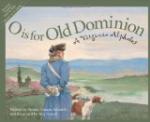We found Herring Creek a good, lazy houseboating waterway; a brown ribbon of marsh stream wandering aimlessly among the rushes. Turn after turn, and the marshes still kept us company—the quiet, lone marshes that had come to have such a charm for us. Evidently, they were beginning to feel that the year was growing old. Greens were sobering into browns, and near the water’s edge were tips of silvery white. The frowsy-looking grassy bunches, here and there, were ducking blinds, where hunters soon would be in hiding with their wooden decoys floating near.
Like some great marsh creature herself, Gadabout followed the winding way, puffing along contentedly. Sometimes, when the turns were too sharp for her liking, she swung to them lazily, with a long purr of water at bow and stern, and seemed about to wallow off through the rushes.
Now something of a bank developed along our starboard side. It grew into a bluff covered with pines and thick-coated cedars and white-trunked sycamores and gray beeches. This woodland too had the year writ old. The surviving green of cedar and pine could not hide the telltale leafless trees that stood between. But more significant than leafless trees was the luxuriant holly with its ripe, red berries, gayly ready for Christmas decorations and to grace the birth of a new year.
And yet, these were among the most glorious days for houseboating: tonic days with a hint of winter in the chill, crisp air, and dreamy days with a lingering of summer in the sun’s warm glow. The enervating heat was over, and the worrisome insects were gone. In peace we could sail in the marsh stream or climb the banks for ferns and holly. Gadabout moved with masses of pale reeds, spicy boughs of cedar, bay branches, and glowing holly nodding on her bow. The air was no longer filled with the song of birds; but it was alive and cheerily a-twitter with their fat flittings from seeds to berries, from marsh to woodland. Heartily we declared that it was better to go an-Autumning than a-Maying.
After a while there were signs of people about. Little boats were nosing into the bank here and there, and occasionally a white farmhouse would peep over the bluff above our water-trail.
[Illustration: “Little boats were nosing into the bank here and there.”]
It was along toward dinner time when, according to our count, the houseboat had rounded as many bends as the chart seemed to require, and ought to be near Westover Church. So, upon catching sight through the trees of a brick building up on the bluff, we concluded that Gadabout had reached her journey’s end, and an anchor was dropped.
Toward evening Nautica and the Commodore went ashore. At the top of the hill was a little graveyard, and standing in it was the old church that we had come to see. It was a small building and plain, but of historic interest. As originally built, about the middle of the seventeenth century, it stood not here but down on the shore of the James at Westover. One of the earliest churches in the country, and then standing on one of the greatest estates in Virginia, it was a typical centre of colonial life; and gathered about it, in the little graveyard by the river, were the tombs of noted colonial dead.




